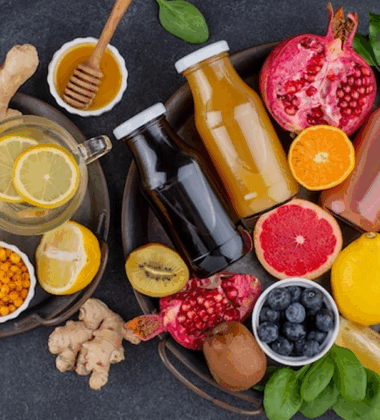As the food and beverage industry becomes increasingly complex and globalized, ensuring safety, transparency, and efficiency across the supply chain has never been more critical. At the core of this transformation is a powerful, evolving force: artificial intelligence in supply chain management.
From predicting contamination risks to optimizing logistics and traceability, AI is revolutionizing the way food brands think about safety and reliability. At the upcoming Global Products Expo 2025, taking place from June 26–28 at the New Jersey Expo Center, attendees will get a first-hand look at the cutting-edge innovations redefining food safety for a smarter, safer world.
Let’s explore how AI technologies—especially in the realm of food safety—are not only solving long-standing issues but also creating a future where transparency, efficiency, and prevention become the industry standard.
Why AI Is the Future of Food Safety
Traditional food safety systems often rely on manual processes, reactive protocols, and limited real-time visibility. This reactive approach increases the risk of contamination, product recalls, and supply chain disruptions. But artificial intelligence in supply chain management offers a proactive alternative—using machine learning algorithms, smart sensors, and predictive analytics to spot issues before they happen.
AI helps companies:
- Detect anomalies in temperature or storage conditions in real time.
- Predict contamination outbreaks based on data patterns.
- Automatically trace the origin of a product in seconds.
- Identify inefficiencies or risk points across the chain.
The result? Faster decision-making, fewer recalls, and greater consumer trust.
Smart Sensors: Real-Time Monitoring at Every Step
One of the most impactful applications of AI in food safety is through smart sensors—devices placed throughout the supply chain to gather data on temperature, humidity, spoilage, and other environmental conditions.
These sensors feed data into AI systems that monitor for any deviation from safety thresholds. If a shipment of fresh produce begins to spoil mid-transit, or a cold storage unit fails, the system sends an immediate alert—sometimes even before a human notices.
Key Benefits:
- Reduce waste caused by unnoticed spoilage
- Ensure compliance with safety regulations (like HACCP)
- Maintain consistent quality from farm to shelf
Smart sensors make it possible to implement continuous quality control, rather than relying on periodic checks.
Predictive Analytics: Preventing Problems Before They Start
AI’s power lies not only in its ability to monitor, but to predict. By analyzing massive datasets from across the supply chain—including historical incidents, weather conditions, shipping times, and supplier data—AI can forecast risks before they materialize.
For example:
- Predicting the likelihood of contamination in a certain shipment based on supplier track record
- Anticipating bottlenecks in distribution based on past performance
- Identifying which ingredients or materials pose the highest safety risks
This predictive approach enables companies to take preventive actions, such as rerouting shipments or switching suppliers, and significantly reduces the chance of a crisis.
Enhanced Traceability: From Farm to Fork
In a world where consumers care deeply about where their food comes from, traceability is essential. AI-powered blockchain systems and product-level tracking tools are giving supply chain managers real-time insights into the origin, handling, and journey of every product.
This is especially important for:
- Responding quickly to recalls or outbreaks
- Proving ethical sourcing or sustainability claims
- Complying with new regulations and certifications
With AI in the loop, brands can deliver data-backed transparency to both regulators and consumers—building trust and reinforcing brand reputation.
AI and Regulatory Compliance
As global food safety regulations tighten, companies are under increasing pressure to stay compliant. AI systems can automate documentation, track compliance metrics, and even flag potential violations before they result in fines or shutdowns.
For manufacturers, this means:
- Easier audits
- Lower legal risk
- Better alignment with evolving international standards (like FSMA, GFSI, etc.)
Real-World Example: AI in Action at the Global Products Expo
At this year’s Global Products Expo, several exhibitors will be showcasing AI-powered safety and logistics systems. These innovations aim to:
- Optimize temperature-sensitive logistics
- Automate food inspection using computer vision
- Forecast demand and inventory needs to reduce overstocking and waste
- Enable real-time quality assurance during production
You’ll find smart solutions that don’t just improve operations—they redefine what’s possible in a food-safe supply chain.
Opening Doors and Creating Opportunities
What makes the Global Products Expo a must-attend event for food tech professionals is not only the product innovation, but the opportunities it creates. Whether you’re an AI startup, a logistics expert, a regulatory consultant, or a brand looking to scale, this event opens doors to:
- Strategic partnerships with AI providers
- Networking with safety and compliance leaders
- Exploring investment-ready technologies
- Discovering new ways to meet ESG goals through AI integration
The intersection of AI and food safety is no longer futuristic—it’s happening now, and this is your chance to be part of it.
Final Thoughts: A Safer, Smarter Future Is Within Reach
As artificial intelligence continues to evolve, it’s poised to become the backbone of a safer, more resilient global food supply chain. By integrating smart sensors, predictive analytics, and automated quality controls, companies can move from reactive to proactive food safety models.
If your brand is committed to transparency, trust, and technological innovation, now is the time to explore how artificial intelligence in supply chain management can work for you.
Want to see these innovations in action? Don’t miss the Global Products Expo 2025—where technology meets taste, and the future of food safety is front and center.





